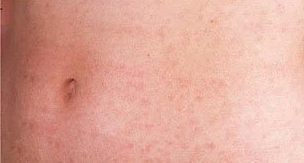
According to the Irish Health Service Executive (HSE) it is most likely that there are a very large number of undiagnosed syphilis cases, here in the Irish Republic. Almost one in 10 of the cases diagnosed this year, up until April 2021, were in the Cork/Kerry region, followed by the Mid-West region of Tipperary North, Limerick and Clare, with 4% of all cases. The remainder were mainly in the Dublin, Kildare and Wicklow region.
Syphilis is a bacterial infection that is usually caught by having sexual intercourse with someone who is already infected. It is therefore important for those who think they might have syphilis to get tested and treated as soon as possible, as the disease can cause more serious problems if left untreated. In most cases the disease can usually be cured with a short course of antibiotics.
Syphilis is a worm-like, spiral-shaped organism which infects people by burrowing into the moist mucous membranes of the mouth or genitals. From there, the spirochaete (twisted bacterium) produces a small visible ulcer known as a chancre (painless ulcer).
In 1495 an epidemic of a new and terrible disease broke out among the soldiers of Charles VIII’s French army after he invaded Naples in the first of the Italian Wars, and its subsequent impact on Europeans was catastrophic. This disease was “grande verole”, the “great pox” or to become later known as syphilis.
Some thought it was a divine punishment for sin, and as such should not be treated as a disease at all.
This affliction starts with genital ulcers, then progressed to a fever, general rash, joint and muscle pains, then weeks or months later same was followed; all over the trunk of the human body, by large, painful and foul-smelling abscesses and sores, or pocks. Muscles and bones became extremely painful, especially when lying down at night. The sores would become ulcers that could eat into bones, before breaking out on the face destroying the nasal area, lips and eyes. Doctors back then knew of no remedy.
Known Past Historical Cases:-
Archduke Otto of Austria, (his nephew was Archduke Franz Ferdinand, who was assassinated by Gavrilo Princip, thus starting WWI ), around 1900, he became ill from the “French Disease” or syphilis, forcing him to replace his nose with a rubber prosthetic.
Al Capone: One of the most notorious gangsters in America, was first diagnosed with syphilis in 1938, while he was serving 11 years in the famous Alcatraz prison, for tax fraud. This led to his death at the age of just 48 years.
Adolf Hitler: Hitler’s tremor and irregular heartbeat, during the last years of his life, were attributed to late stage syphilis. He was supposedly infected by a prostitute in his early 20s, before being treated for same at a hospital in Pasewalk, in Germany. However, in 1937, symptoms re-appeared, indicating that the disease was still active, and by the start of 1942, signs were evident that progressive syphilitic paralysis was beginning to occur.
Syphilis first became curable in 1910, with Dr. Paul Ehrlich’s introduction of the drug Salvarsan or compound 606, the first modern antimicrobial agent, which had dangerous side effects.
In the US Army during World War I, syphilis was the second most common reason for disability and absence from duty, being responsible for nearly 7 million lost working days and the discharge of more than 10,000 men from the forces.
After 1943, with the advent of penicillin, syphilis incidence rates again dropped; to once more slowly increase, in more recent decades.
National figures in Ireland in the first 6 months of this year show 413 new cases, compared with just 484 during the full 12 months of 2018.
The HSE state that they are unsure why cases are rising so steadily and have launched a national outbreak control team; same headed by Dr. Peter Barrett, latter a public health specialist with HSE South.
The HSE state they are seeing increases in the number of cases, especially among women, being diagnosed both in Cork and Kerry, but also nationally.
The early stages of syphilis can be asymptomatic and people can unknowingly infect their partners, so to this end the HSE is launching a new national communications campaign; with alerts already having been sent out to local GPs and hospitals.

Leave a Reply